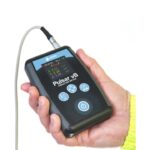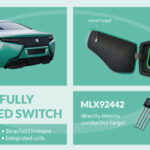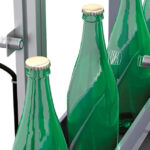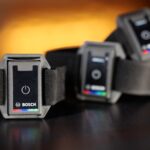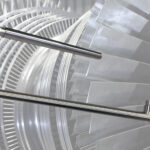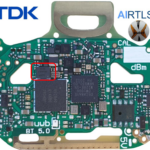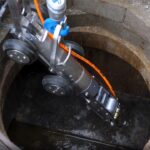Hand-Arm Vibration Syndrome (HAVS) injuries can occur in industrial and other work situations. Also called Raynaud’s phenomenon, vibration-induced white finger, and traumatic vasospastic disease, HAVS has been well known and documented since 1918. It is a prevalent occupational hazard in the construction, forestry, manufacturing, and mining industries, where workers are at high risk of developing […]
Position
Position-sensing switch for enhanced automotive safety
Melexis has introduced the MLX92442 Induxis switch, which offers a contactless and magnet-free monolithic design to directly detect conductive targets, facilitating small module designs with reduced component count for various applications such as high voltage interlocks, charging flaps, seatbelts, hood/trunk, gear tooth sensing, or brake-by-wire systems. Traditional safety automotive latches and switches typically rely on […]
Smart M12 capacitive proximity sensors with IO-Link communications
Carlo Gavazzi is excited to introduce three new series of M12 Capacitive Sensors with IO-Link Communications. Based on our 4th generation TRIPLESHIELD sensors, these CA12 Series Sensors represent the ideal solution for industrial automation equipment in applications where sensing performance must be continuously and accurately monitored and logged. Semiconductor and printing applications benefit from this kind […]
How do diffuse, retroreflective, and through-beam ultrasonic sensors differ?
Ultrasonic frequencies are above the human audio range – higher than 20 kHz. Operating in the ultrasonic frequency range, ultrasonic sensors are commonly used for measuring proximity (distance), determining the level in storage tanks, detecting objects, and more. By measuring the time it takes for sound to travel to and reflect off the surface (time […]
Ready-to-use wearable reference design includes up to eight wirelessly connected sensor nodes
Unlimited access to a personal feedback coach? That’s the dream of many fitness and gaming enthusiasts. With the brand new Smart Connected Sensors platform, Bosch Sensortec ensures that movements and repetitions are not only measured but that users get qualitative feedback on the movement execution. Specifically designed for full-body motion tracking, this new platform provides […]
LVDTs provide critical measurements for steam turbines
Hermetically-sealed linear position sensors from NewTek Sensor Solutions tolerate the high temperatures and vibrations of steam turbines to deliver accurate and reliable position feedback on the position of the governor and throttle valves. Their high measurement accuracy also makes them ideal for monitoring turbine shell expansion and bearing vibrations as part of process control systems. […]
How sensors help you play ball: part 2
A FIFA-compliant match ball from Adidas has a TDK InvenSense 6-axis MotionTracking device and other electronics mounted in the center of the ball. As shown in Figure 1, the Adidas patented suspension system stabilizes the electronics module. Instead of having the sensing/communication module mounted on the surface of the ball near the inflator valve, the […]
How sensors help you play ball: part 1
In addition to the respect and pride of accomplishment that winning in any sport provides, if it’s done at the professional level, the monetary rewards of winning can be great as well. In fact, exceptional performance can create a lasting legacy for a player, a team, and a coach. This gives coaches, trainers, and the […]
Position sensors are ASIL C-ready
TDK Corporation further extends its Micronas 3D HAL position sensor family with new HAL 3930-4100 and HAR 3930-4100 for automotive and industrial applications. Both sensors empower precise position detection with robust stray-field compensation capabilities, offering flexible digital output interfaces in the form of PWM or SENT. The single die devices are defined as SEooC (Safety […]
What’s the difference between sensors used in underwater, flying, and creeping robots or drones? part 3
The abilities of robots continue to advance with highly capable products performing a variety of tasks, looking almost humanlike as they speak, and even garnering appearances in movies. Perhaps less attractive but equally or even more useful, creeping or crawling robots bring drones down to earth and, in fact, inside the earth. Unlike the micro […]

